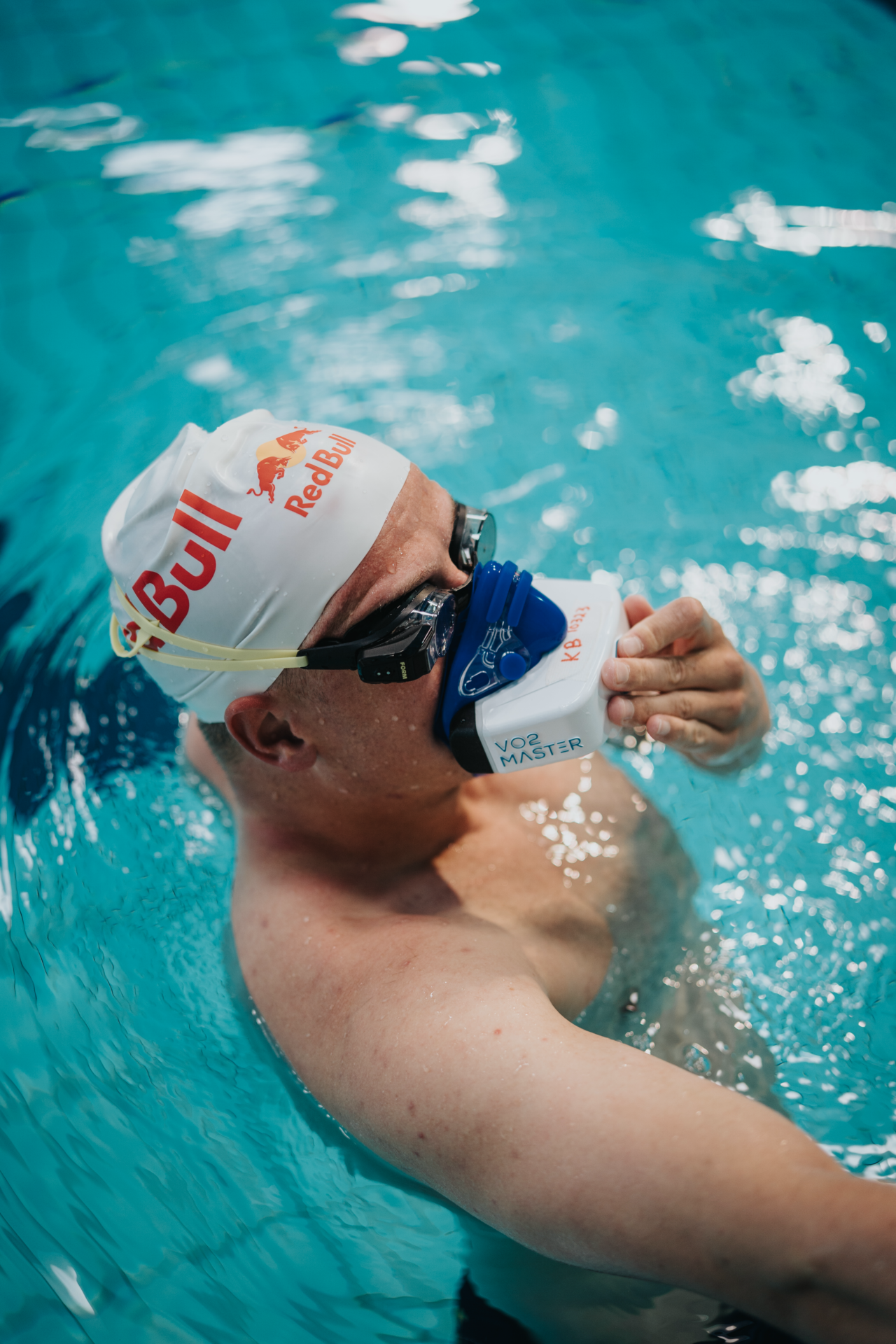The Norwegian Method: Kristian Blummenfelt on Training Optimization, Mindset, and What’s Next
In this second episode of The Norwegian Method, Kristian Blummenfelt shares his training regime with Dr. Lipman. Here are 7 essential takeaways.

In our first episode of The Norwegian Method Podcast—back for a brand-new season presented by Santara Tech—host Dr. David Lipman spoke with Olympic gold medalist and three-time World Champion triathlete Kristian Blummenfelt. They explored his journey from entry into triathlons to competing in the Olympics.
In this second episode, Dr. Lipman continues the conversation with Kristian Blummenfelt. They dive into all things training, including training strategy for short versus long-course racing, Kristian’s specific training modifications for Paris 2024, his mindset, thoughts on self-imposed pressure, and so much more.
Here are 7 essential takeaways.
1. The Vast Difference Between Training For Short-course Versus Long-course
To optimize training for short-course races, Kristian aims for a higher artificial speed. His approach is to learn how to run faster for the entire session to develop a better stride for what he needs to accomplish in short-course races.
On the other hand, for his long-course strategy, he aims for a race pace in which he’ll go for a relatively slower speed but for significantly longer than the threshold.
So, short-course training—done on a road bike–involves higher intensity, whereas training for long courses–using his TT bike—is about matching race-specific paces.
To help reach peak performance in technical courses, he’ll add in plenty of brick sessions that are focused on race pace and power. He’ll also use data from metabolic-tracking devices like the VO2 Master analyzer to dial into the details and boost performance.
2. Kristian’s Training Modifications for Paris 2024 Mirror a Long-Course Training Approach
His approach to training for the Olympics is similar to that of a long-course, but there are a couple of key differences.
One key difference is that Kristian finds using a balanced approach to his regime yields better results. This can look like taking slightly shorter bike training intervals to conserve energy for a swim threshold that’s a couple of days away or for a track session.
He’ll specifically conserve energy for areas he feels could use improvement; right now, that happens to be the swim and run portions. The added benefit of this approach is that it helps prevent injuries.
Kristian emphasizes that swim and run portions are important for Paris 2024, so focusing on these will be invaluable in the journey for gold.
3. He Strategically Uses Caffeine to Get His Body into Action
While sleep and caffeine are two crucial lifestyle components to optimizing his performance, Kristian finds caffeine to be especially helpful in urging his body to move.
Without coffee, “my brain’s in a hammock,” he describes. He’ll match his caffeine intake with his weekly training schedule.
Often, he’ll have the highest training intensity on the weekend and ease up during the middle of the week. On those weekends, he’s upping his caffeine intake and then pulling back during the less intense mid-week sessions.
4. Pressure Acts as a Motivating Factor
Kristian has always found mental pressure helpful. We can see this in action if we rewind to his Singapore race, a day and a half after a seven-day racing block in Paris.
A week of racing in Paris, combined with a previous race in Milwaukee, facing a series of losses during those races, and knowing that the consensus among everyone was a resounding ”it’s not healthy to continue to another race” was the perfect recipe to create a high-pressure environment. The added layer was Kristian’s self-imposed mental pressure.
But Kristian thrived off of that pressure. He explains that it’s about the challenge, exclaiming, “Pressure’s about the freedom to think outside the box!”
When he won the race in Singapore, it was a massive relief for him to finally tick that checkbox.
5. His Mindset is Balanced Like His Training Regime
Although he thrives off of pressure, Kristian has adopted a flexible, growth-oriented mindset when it comes to racing goals.
When he feels he’s had suboptimal bike training or a setback, he adjusts his goals and tactics for a race.
Kristian emphasizes that it’s about learning how to attack when you’re strong and learning how to be conservative when you’re not strong.
When it comes to Paris 2024, he’s indulging in a healthy dose of visualization by imagining himself winning. As he says, “I’m not here for the experience, I’m here for the gold medal.”
Even that determination is balanced with the idea that, while leaving without a medal would be a failure for him, he’ll cross that bridge if he comes to it.
6. He Feels Optimistic About Paris 2024
All in all, Kristian is feeling optimistic about Paris 2024! He’s seeing the results in the training lab, staying healthy, and staying uninjured.
He describes this fine balance as teetering on the edge. For the next month, he aims to be as close to the edge as possible without stepping over.
7. Given His Affinity For Out-of-the-Box Thinking, He’s Working on Unique Projects For the Future
When asked, “What’s next for Kristian?” He reminds us of his love for an out-of-the-box approach. He’s currently working on a unique project that goes back to his child-like dream of doing something completely new and unexpected.
If you’d like to learn more, you can listen to episode 2 in its entirety. You can also find brand-new video content and previous episodes from The Norwegian Method on the VO2 Master blog.
